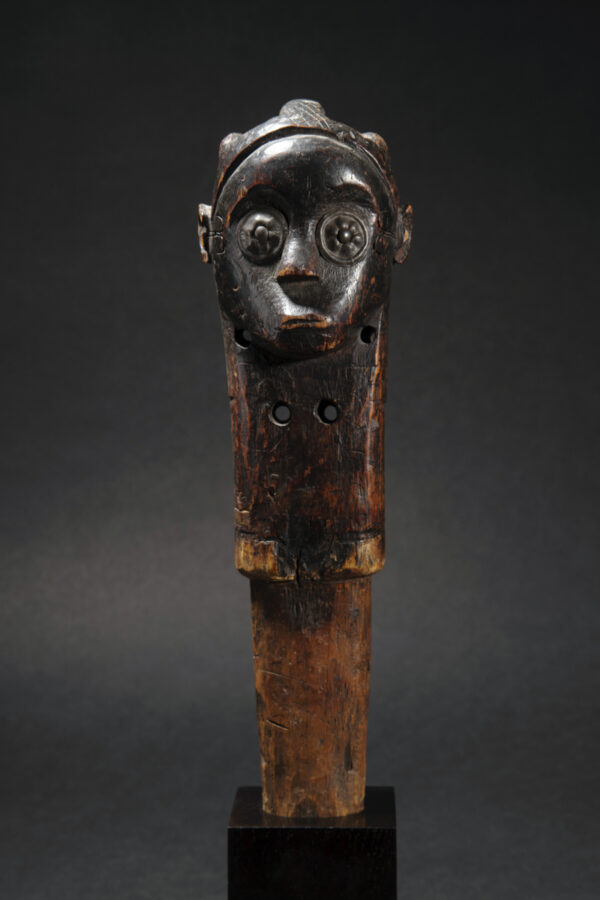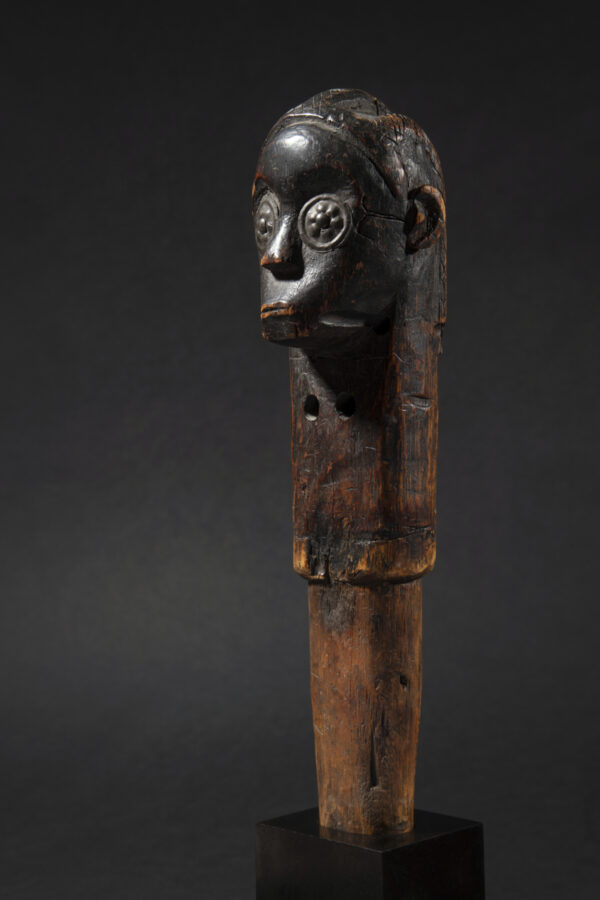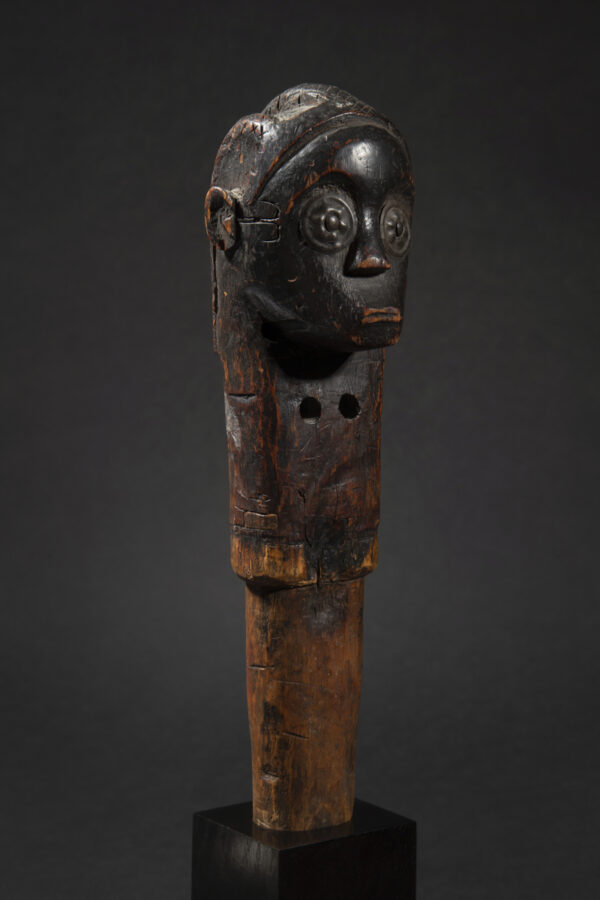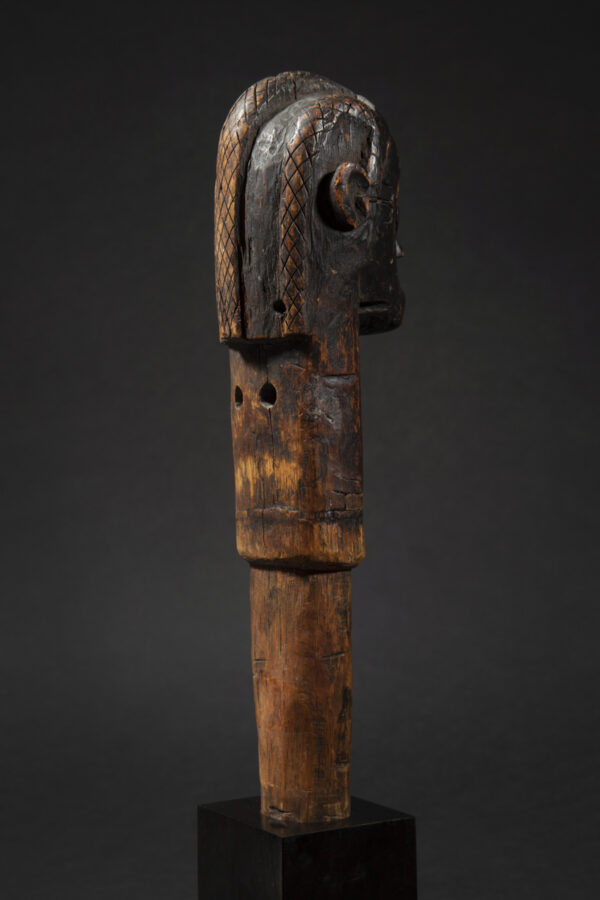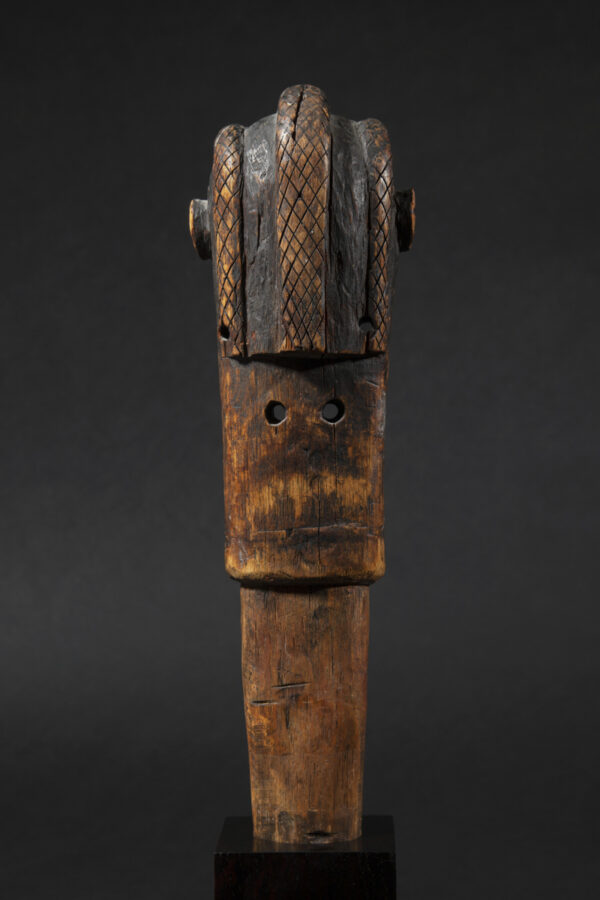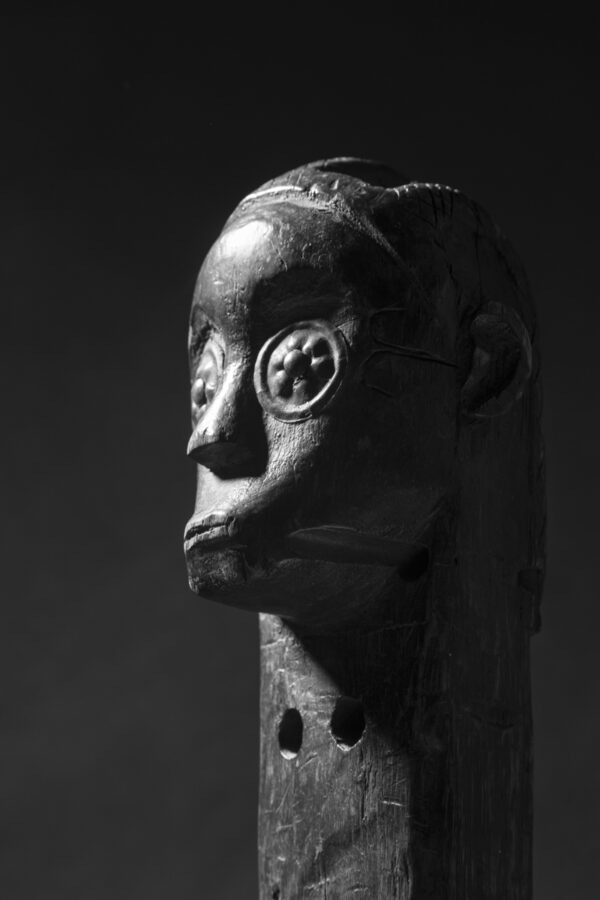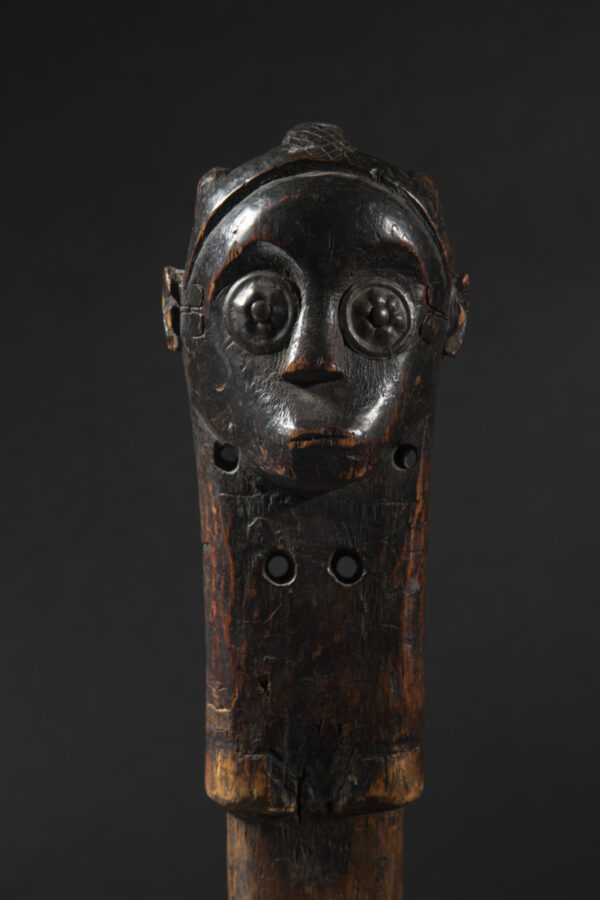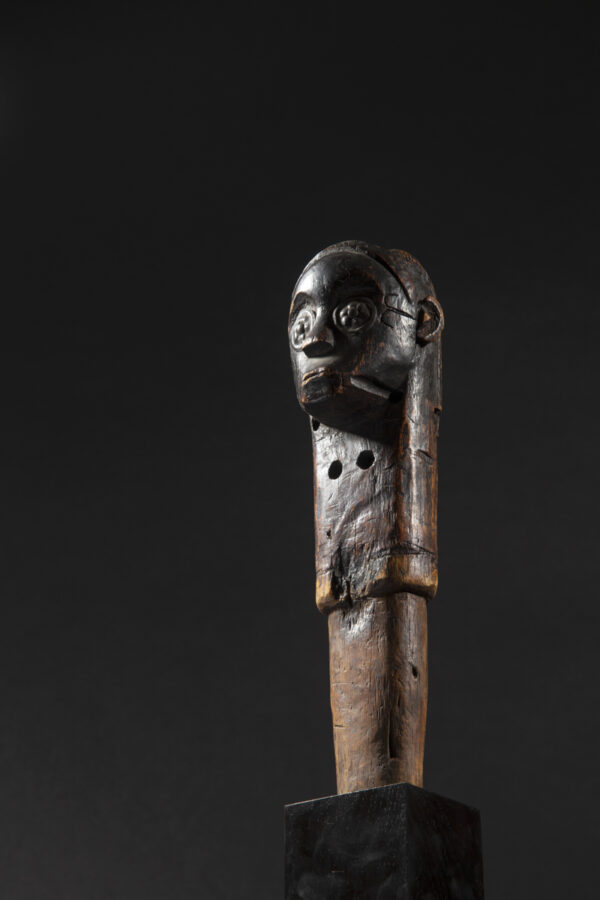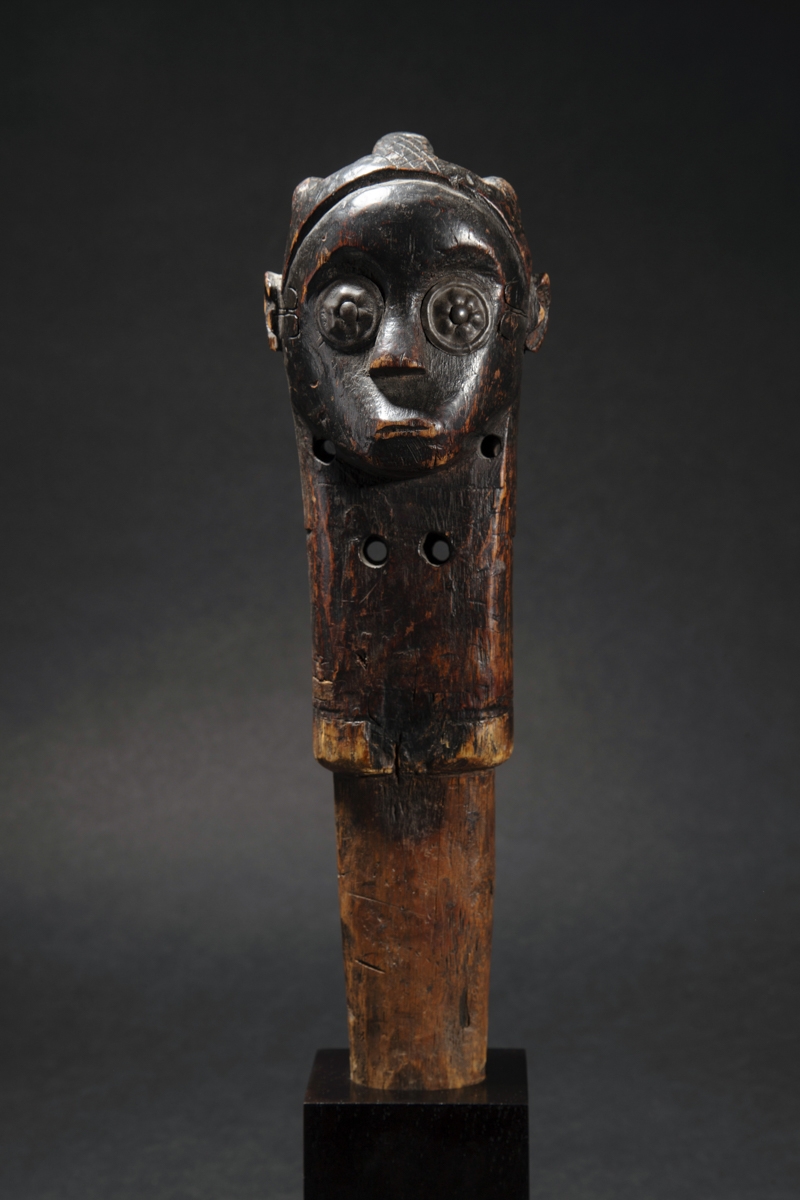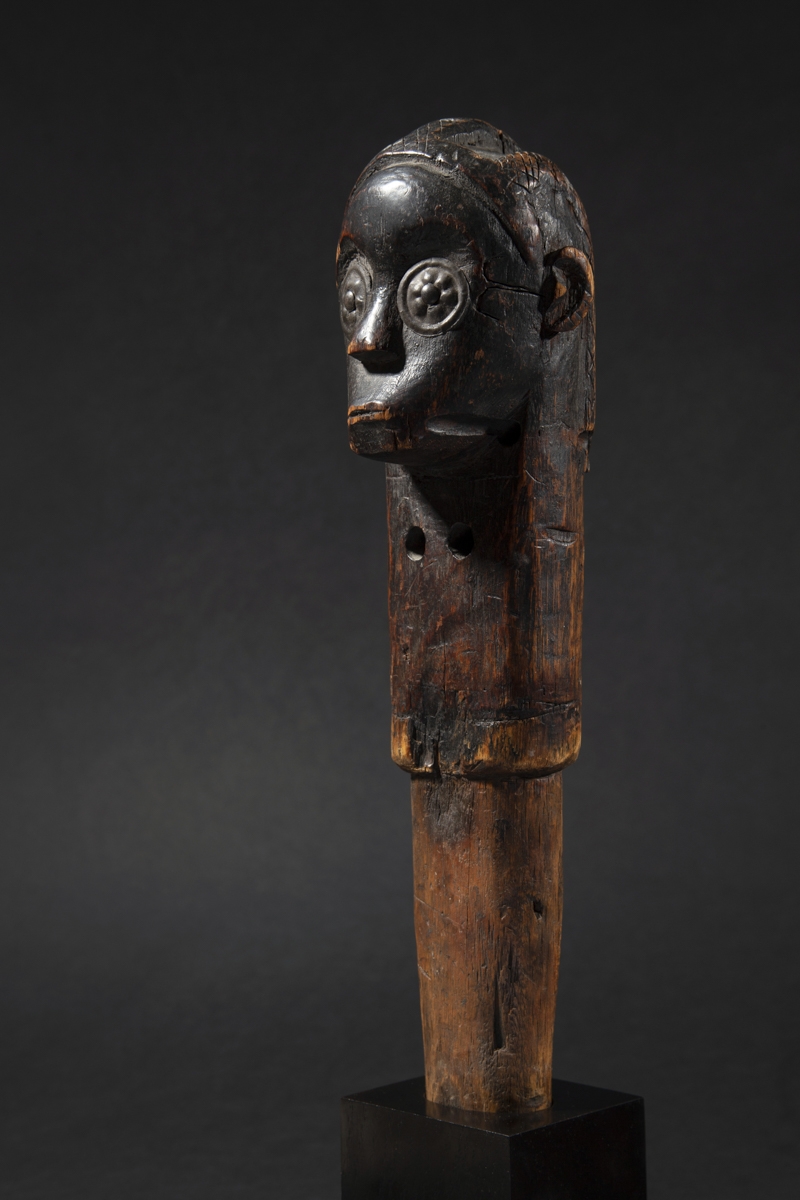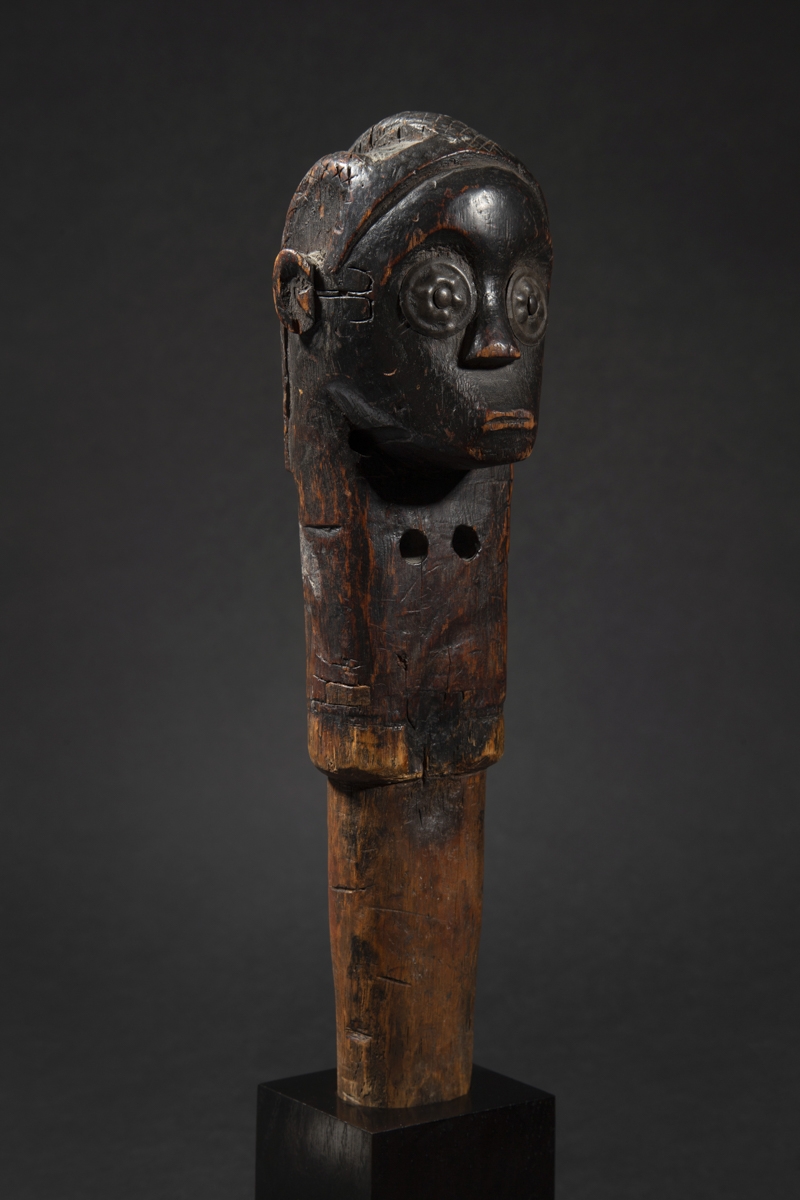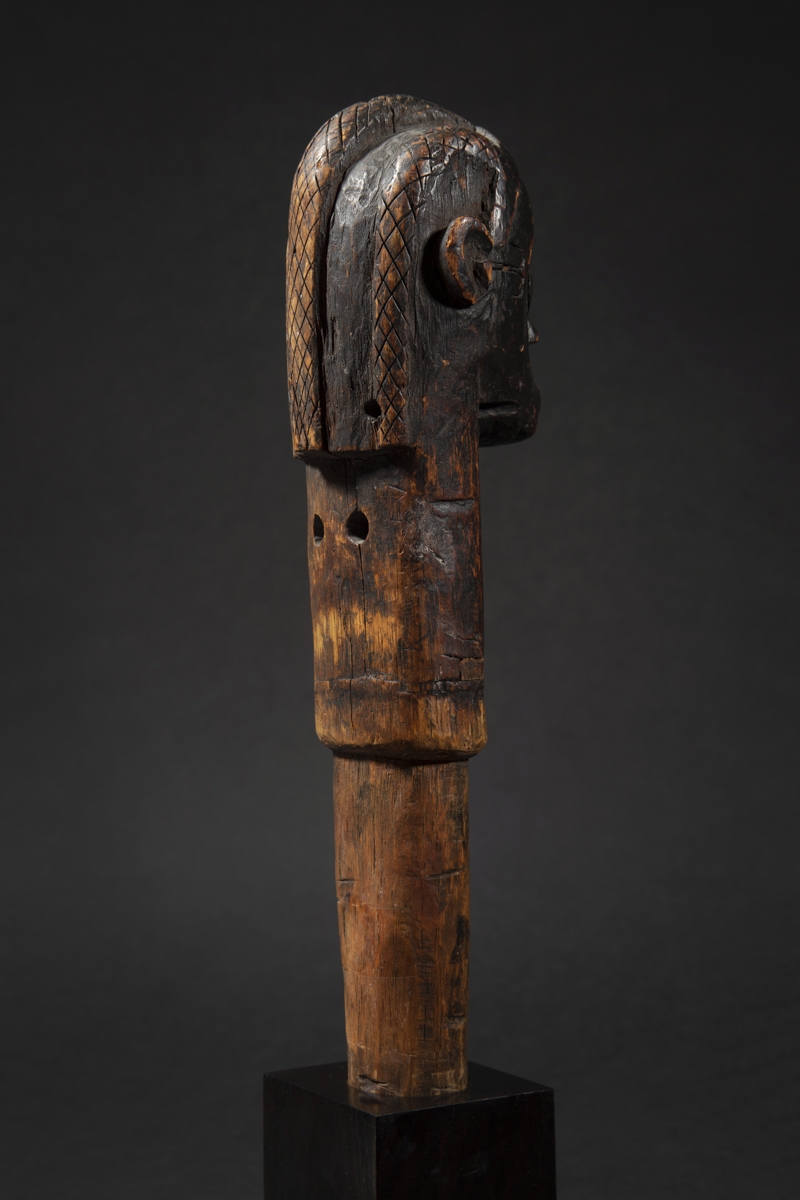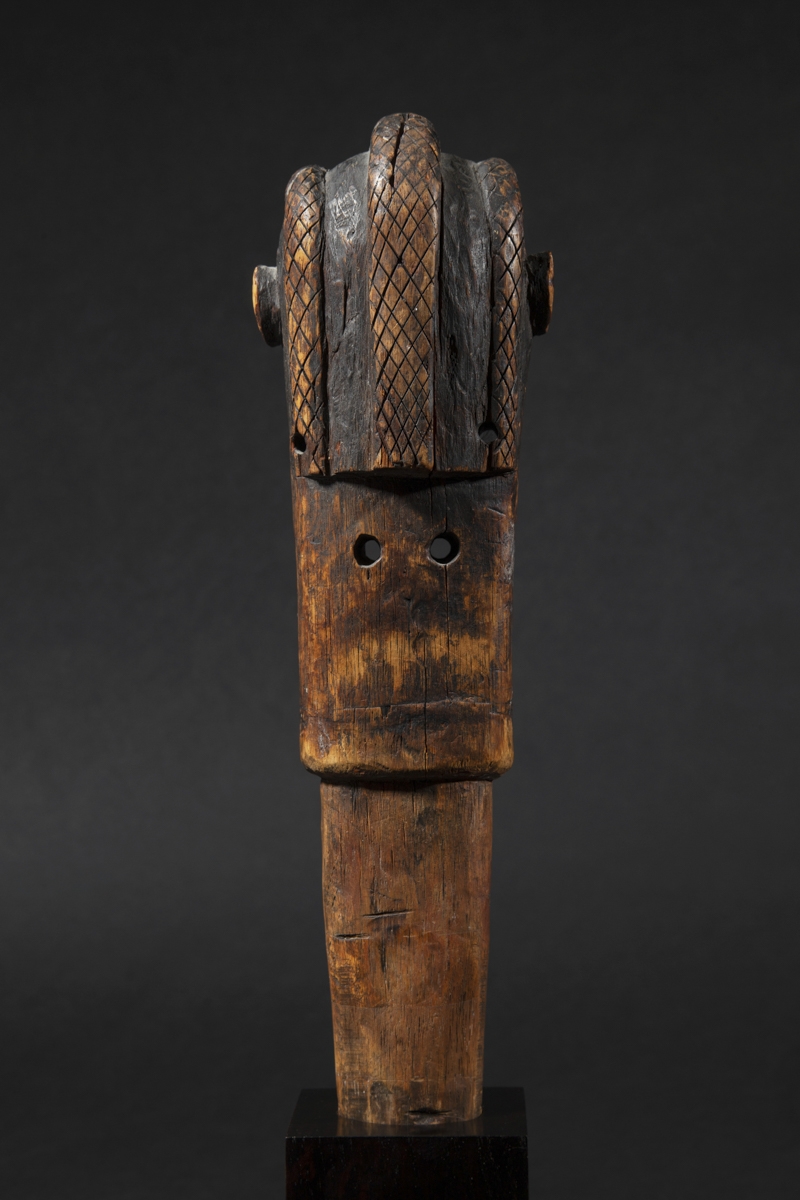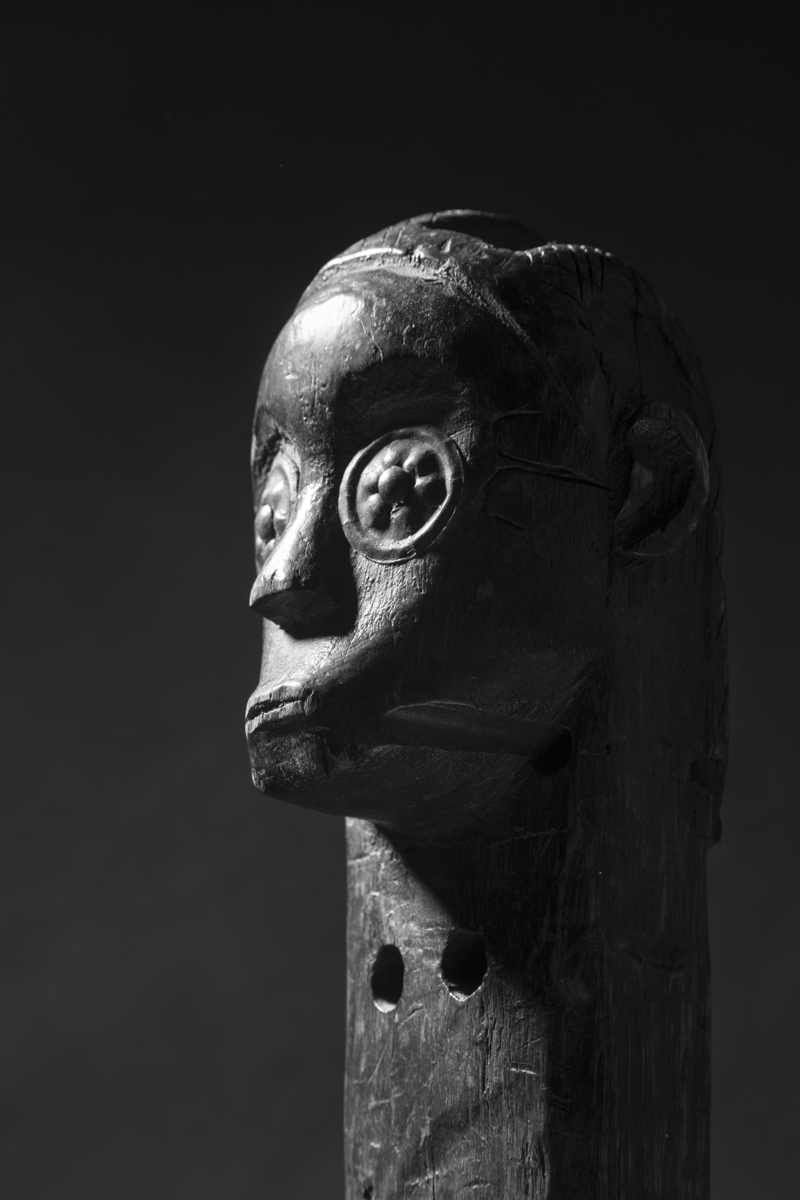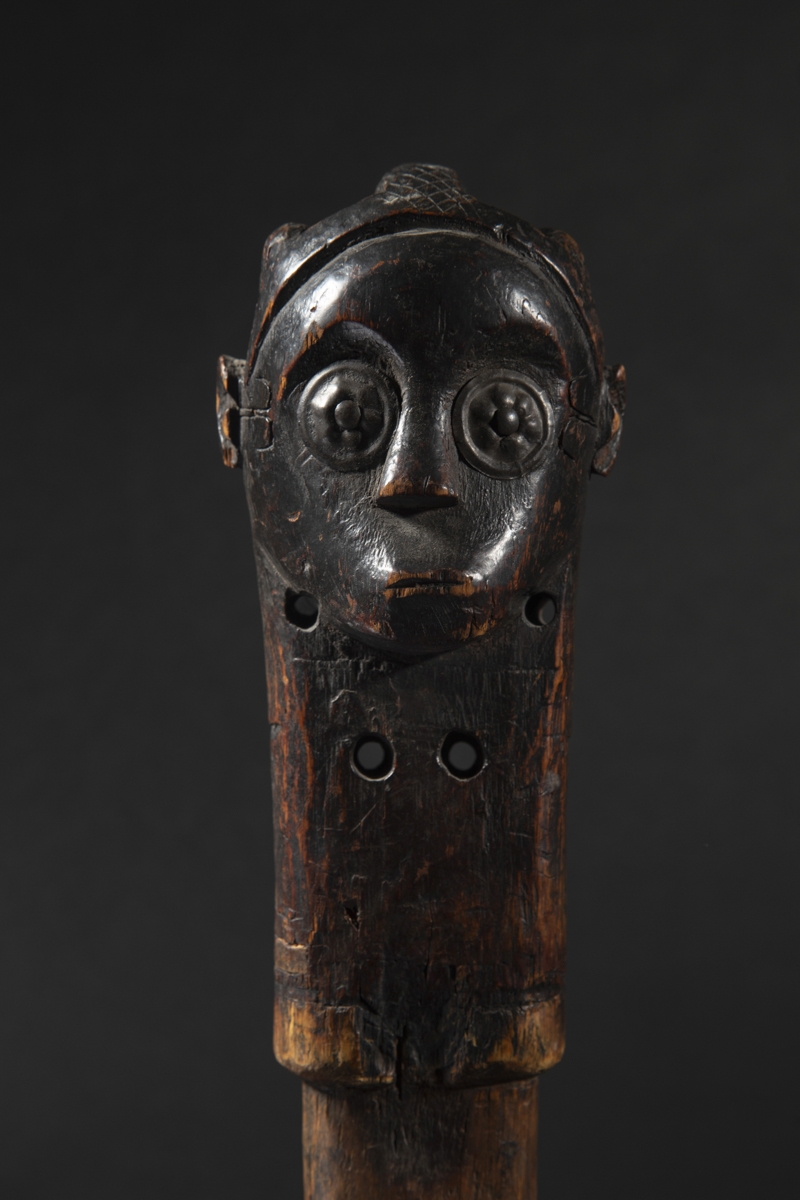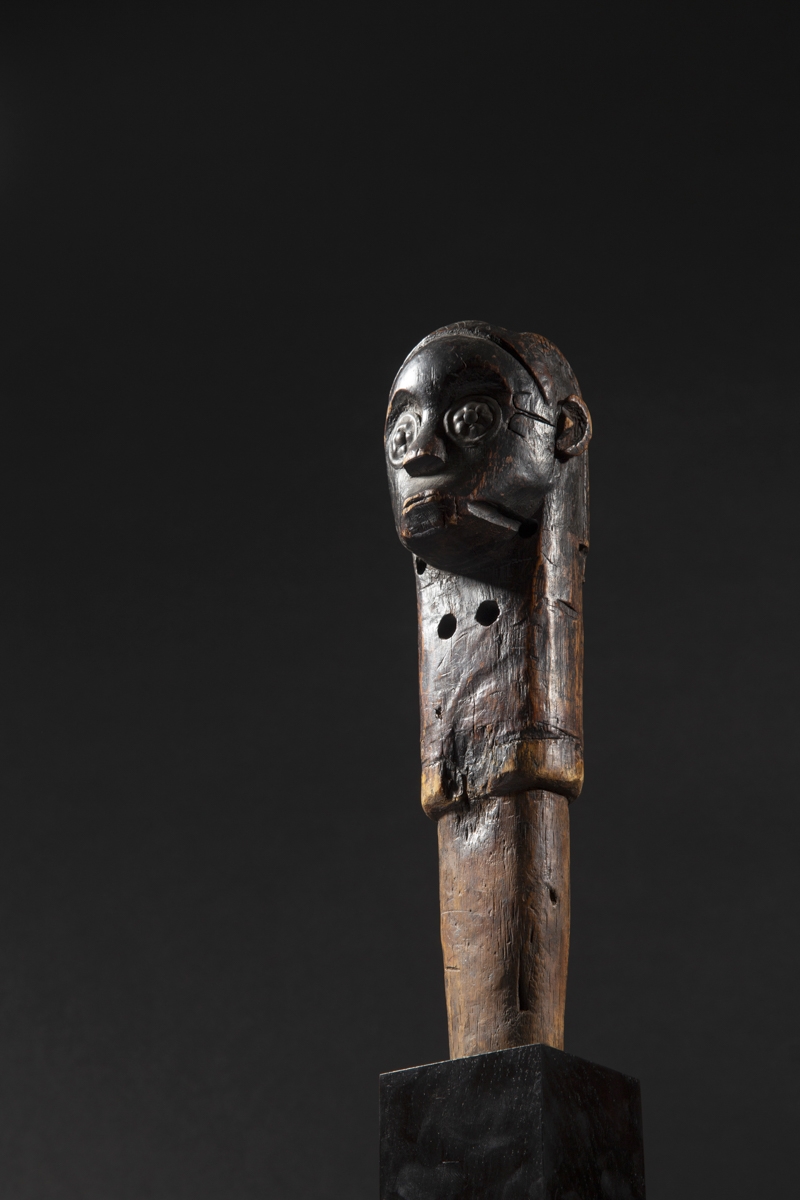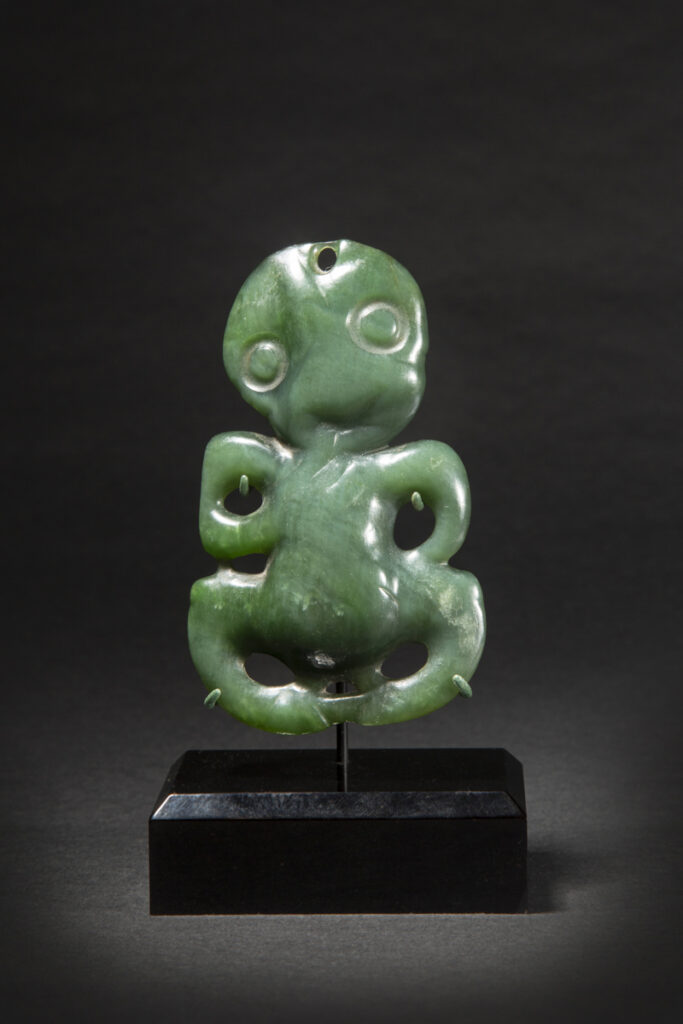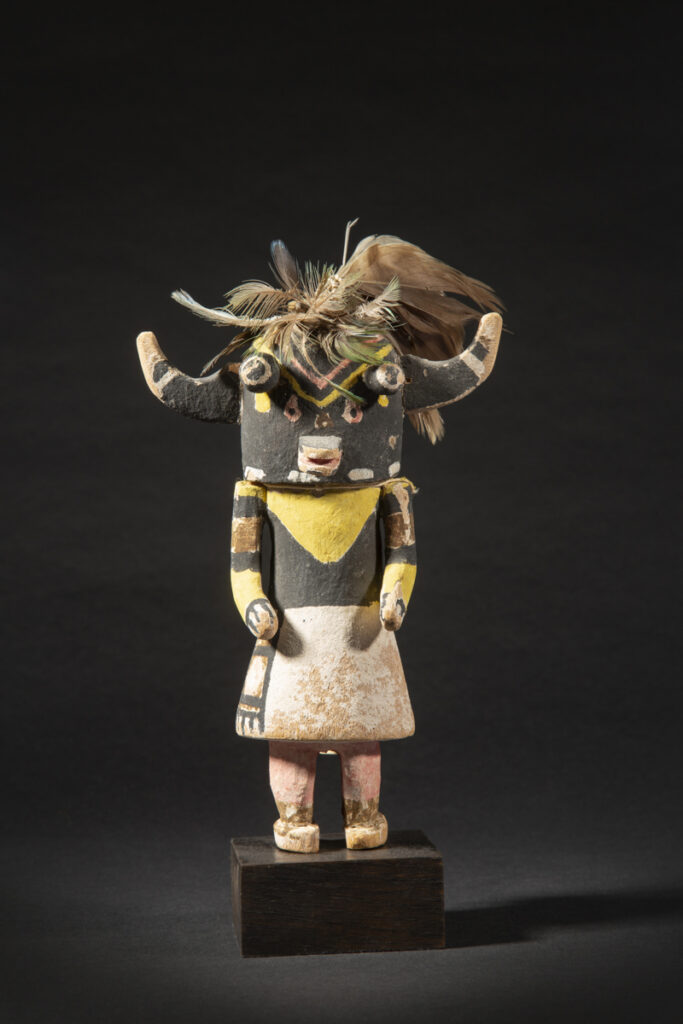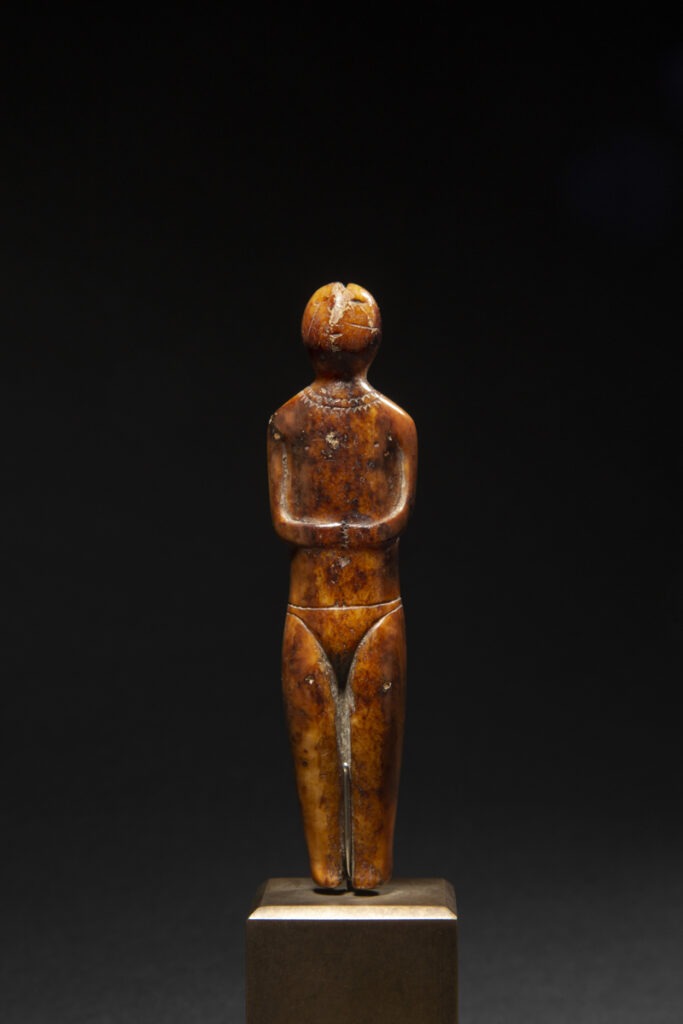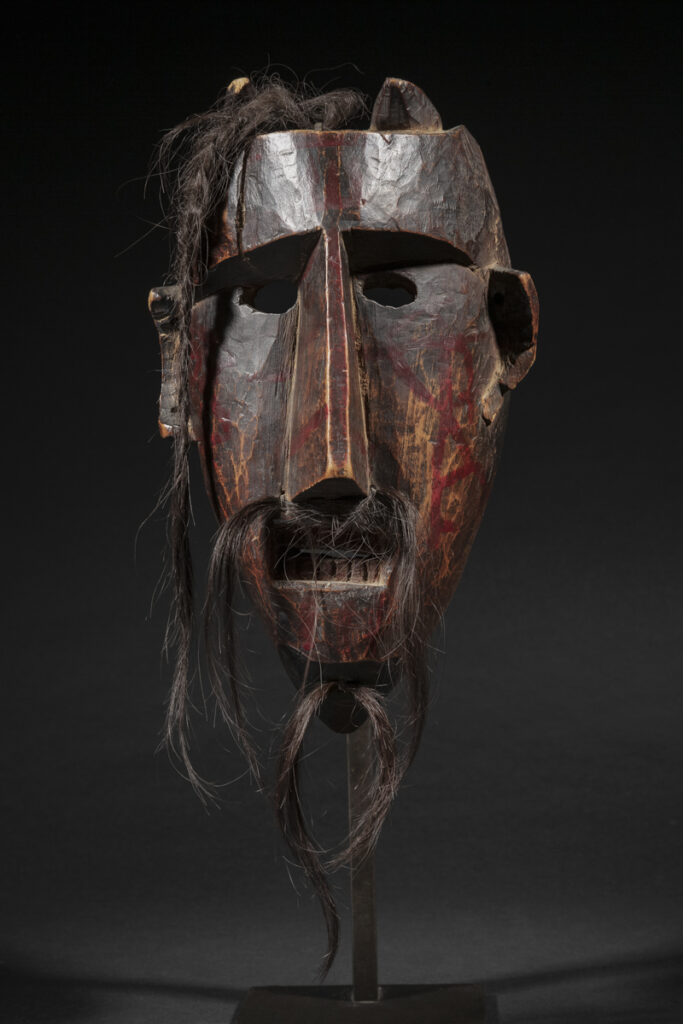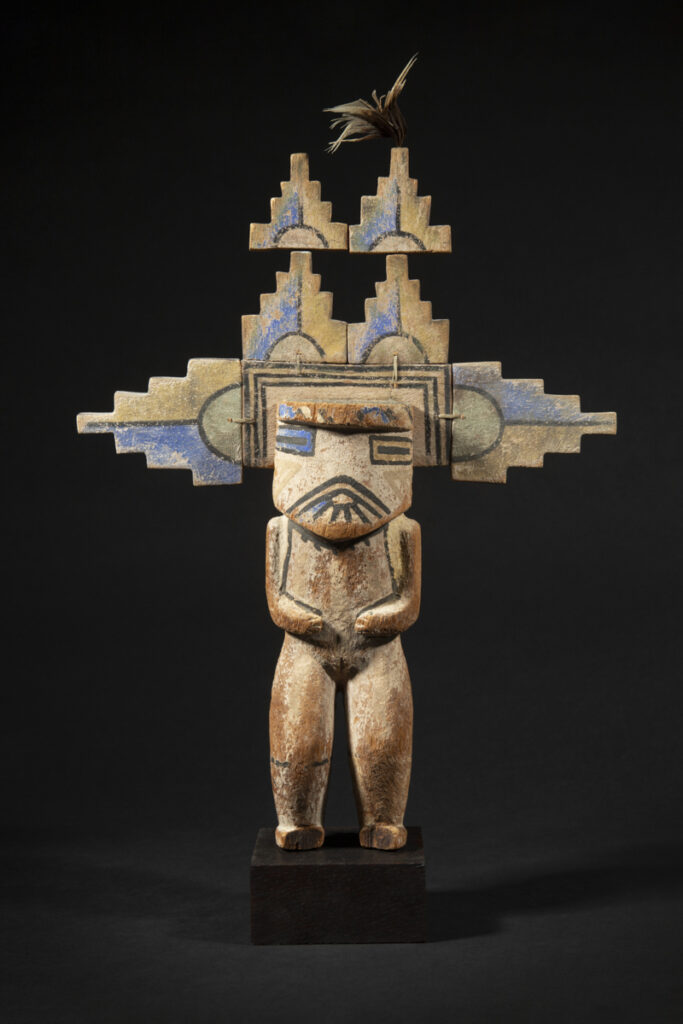Africa | Gabon
Fang Head
Gabon
Harp head
Late 19th century
Carved wood and metal
Height: 35.5 cm – 14 in.
Provenance
Ex Sotheby’s London, 28-30 nov. 1983, lot 185
Possibly Merton Simpson (1928-2013), New York
Ex collection Seymour Lazar, Palm Springs, USA
Fang Head 35.5 cm / Galerie Flak
Price on request
This highly expressive carved head was originally affixed to the upper part of a ritual musical instrument, the arched harp known as ñgomi among the Fang people of Gabon.
Erich M. von Hornbostel notes in Fang (Musée Dapper, 1997) that music played a very important role in the life of the Fang. Musical instruments were played to provide the rhythm and underpin the melody of ritual or secular choral songs. Solo or choral songs were accompanied by the flute and the harp. This typology of harp descends from an instrument already known in the time of ancient Egypt.
According to Louis Perrois, all the significant activities of customary life among the Fang had to be conducted under the aegis of the ancestors. This explains why many carved objects were adorned with the face of an ancestor, which was the customary mark of lineage chiefs.
The head finial on a ñgomi harp was a reminder that the melody played on the instrument's strings was the « voice » facilitating contact with the world of the spirits and the deceased.
Erich M. von Hornbostel notes in Fang (Musée Dapper, 1997) that music played a very important role in the life of the Fang. Musical instruments were played to provide the rhythm and underpin the melody of ritual or secular choral songs. Solo or choral songs were accompanied by the flute and the harp. This typology of harp descends from an instrument already known in the time of ancient Egypt.
According to Louis Perrois, all the significant activities of customary life among the Fang had to be conducted under the aegis of the ancestors. This explains why many carved objects were adorned with the face of an ancestor, which was the customary mark of lineage chiefs.
The head finial on a ñgomi harp was a reminder that the melody played on the instrument's strings was the « voice » facilitating contact with the world of the spirits and the deceased.
Explore the entire collection
